 I’m getting a late jump on listing the best books I read in 2019. I’ve had some personal things going on over the past few months that have knocked me out of commission. I may write about those things here on the blog soon, or I may not say anything, and you’ll naturally assume the worst.
I’m getting a late jump on listing the best books I read in 2019. I’ve had some personal things going on over the past few months that have knocked me out of commission. I may write about those things here on the blog soon, or I may not say anything, and you’ll naturally assume the worst.
This year’s list, as in years past, contains books I read during the previous year. That does not mean that those books were published in 2019. In fact, most were not. I just happened to read them in 2019.
I ran into a bit of a problem this year when compiling my list. And the nature of the problem was very basic. That is, what is a book? That seems simple enough, but I read (listened to) many audio books during the year, and Audible recently started publishing what they call “Audible Originals.” Audible Originals are audio-only books. There is no printed version of the book available. So, are these audio books actually books?
I struggled with this question and ultimately decided not to include the audio-only books in my list. As I write this, I’m already regretting my decision. There were some very good audio-only books, including Midnight Son by James Dommeck, Jr. and The Dead Drink First by Dale Maharidge.
As in years past, I’ll begin with the tenth best book I read this year and slowly make my way to the book that was better than all the rest. The suspense will be excruciating. If you have a heart condition, please consult your doctor before reading further.
 10. Station Eleven by Emily St. John Mandel – I had heard good things about Station Eleven before reading it. Unfortunately, I saw in the description of the book that the story takes place in a dystopian world following the collapse of society. I’m not really into dystopian novels. I’ve read a few and had trouble telling one from the other. Even so, I read Station Eleven and was pleasantly surprised. The story is unique, the characters are well developed, and the writer does a good job of keeping the reader engaged, not spending too much time explaining the rules of the world she has created. I’m not ready for another dystopian novel any time soon, but I’m glad I read Station Eleven.
10. Station Eleven by Emily St. John Mandel – I had heard good things about Station Eleven before reading it. Unfortunately, I saw in the description of the book that the story takes place in a dystopian world following the collapse of society. I’m not really into dystopian novels. I’ve read a few and had trouble telling one from the other. Even so, I read Station Eleven and was pleasantly surprised. The story is unique, the characters are well developed, and the writer does a good job of keeping the reader engaged, not spending too much time explaining the rules of the world she has created. I’m not ready for another dystopian novel any time soon, but I’m glad I read Station Eleven.

9. Gone So Long: A Novel by Andre Dubus III – Andre Dubus III is one of my favorite literary writers. His book Dirty Love was terrific, and I also really liked The House of Sand and Fog. Gone So Long is the story of an ex-con—a murderer—who is trying to reconnect with the daughter he has been estranged from for forty years. After life in prison, Danny is ill-equipped to navigate his way back to his daughter, especially considering that he was convicted of murdering her mother. But that doesn’t stop him from writing to her and making the long drive to Florida to see her. His daughter is reluctant to meet with him. Even so, Danny pushes forward, determined to see her before he dies. Dubus gives a master class in character development. Each of his characters is flawed, but all too human. I enjoyed the time I spent with them.
 8. The Long Flight Home by Alan Hlad – The Long Flight Home takes place in England during World War II and is inspired by true events. Susan lives with her grandfather, and together, they raise carrier pigeons. The British military contacts them and asks for their help delivering messages to British troops in German-occupied France. Ollie is a crop duster from Maine who is determined to join the Royal Air Force. When his plans change and he finds himself alone in England, he meets Susan, and helps her and her grandfather with the pigeons. The relationship between Susan and Ollie grows as they work together, but the fates of war are not going to make it easy for them to be together. For some reason, I can’t get enough of books that take place during World War II, and The Long Flight Home definitely fits the bill.
8. The Long Flight Home by Alan Hlad – The Long Flight Home takes place in England during World War II and is inspired by true events. Susan lives with her grandfather, and together, they raise carrier pigeons. The British military contacts them and asks for their help delivering messages to British troops in German-occupied France. Ollie is a crop duster from Maine who is determined to join the Royal Air Force. When his plans change and he finds himself alone in England, he meets Susan, and helps her and her grandfather with the pigeons. The relationship between Susan and Ollie grows as they work together, but the fates of war are not going to make it easy for them to be together. For some reason, I can’t get enough of books that take place during World War II, and The Long Flight Home definitely fits the bill.
 7. Next Year in Havana by Chanel Cleeton – Next Year in Havana tells the story of a family in Cuba coming to grips with their changing lives in the face of the rise of Fidel Castro. Much has been written about this time in Cuba, but one of the things I appreciate about the author was how she wove in the struggles current day Cubans—both in Cuba and the United States—have with the island nation. She captures the love/hate relationship they had and have with Cuba. Part of the book takes place in 1958, just before the revolution, and part takes place in 2017 in both Havana and Miami, as relations between the US and Cuba are starting to thaw. I’ve always been drawn to the history and culture of Cuba. Next Year in Havana did a great job of sharing the history and immersing me in the culture of our Caribbean neighbor.
7. Next Year in Havana by Chanel Cleeton – Next Year in Havana tells the story of a family in Cuba coming to grips with their changing lives in the face of the rise of Fidel Castro. Much has been written about this time in Cuba, but one of the things I appreciate about the author was how she wove in the struggles current day Cubans—both in Cuba and the United States—have with the island nation. She captures the love/hate relationship they had and have with Cuba. Part of the book takes place in 1958, just before the revolution, and part takes place in 2017 in both Havana and Miami, as relations between the US and Cuba are starting to thaw. I’ve always been drawn to the history and culture of Cuba. Next Year in Havana did a great job of sharing the history and immersing me in the culture of our Caribbean neighbor.
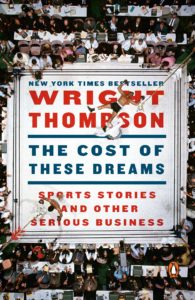 6. The Cost of These Dreams by Wright Thompson – For years, Frank DeFord was recognized as the dean of long form sports writers. He was celebrated in the pages of Sports Illustrated, and his stories carried him outside of sports onto the national stage. For me, Wright Thompson is our current version of Frank DeFord. He’s a terrific writer, but he also brings a unique perspective. He has a way of taking a subject—whether profiling former Ohio State Football Coach Urban Meyer or telling the story of a round of golf he shared with his father—and turning it into more. More meaningful, more emotional, more universal. Wright grew up in the cradle of Southern writers—Oxford, Mississippi—and brings a literary eye to sports writing. In The Cost of These Dreams, Thompson shares several essays that were previously printed in ESPN the Magazine. They showcase the depth and breadth of a true artist at the top of his craft.
6. The Cost of These Dreams by Wright Thompson – For years, Frank DeFord was recognized as the dean of long form sports writers. He was celebrated in the pages of Sports Illustrated, and his stories carried him outside of sports onto the national stage. For me, Wright Thompson is our current version of Frank DeFord. He’s a terrific writer, but he also brings a unique perspective. He has a way of taking a subject—whether profiling former Ohio State Football Coach Urban Meyer or telling the story of a round of golf he shared with his father—and turning it into more. More meaningful, more emotional, more universal. Wright grew up in the cradle of Southern writers—Oxford, Mississippi—and brings a literary eye to sports writing. In The Cost of These Dreams, Thompson shares several essays that were previously printed in ESPN the Magazine. They showcase the depth and breadth of a true artist at the top of his craft.
 5. Go Like Hell: Ford, Ferrari and Their Battle for Speed and Glory at LeMans by A.J. Baime – Last fall, I was very excited to see the movie Ford vs Ferrari starring Matt Damon and Christian Bale. Damon plays Carroll Shelby, a legendary racer and character, and the inspiration for my daughter’s name (Shelby). But before seeing the movie, I wanted to read the book it was based on. As much as I liked the movie (I thought it was great), I liked the book even better. Go Like Hell gets into all of the details of the story that the movie didn’t have time for. The author did a great job of introducing us to the characters and slowly building the story. Everything was in just the right place. Reading Go Like Hell was a wonderful ride.
5. Go Like Hell: Ford, Ferrari and Their Battle for Speed and Glory at LeMans by A.J. Baime – Last fall, I was very excited to see the movie Ford vs Ferrari starring Matt Damon and Christian Bale. Damon plays Carroll Shelby, a legendary racer and character, and the inspiration for my daughter’s name (Shelby). But before seeing the movie, I wanted to read the book it was based on. As much as I liked the movie (I thought it was great), I liked the book even better. Go Like Hell gets into all of the details of the story that the movie didn’t have time for. The author did a great job of introducing us to the characters and slowly building the story. Everything was in just the right place. Reading Go Like Hell was a wonderful ride.
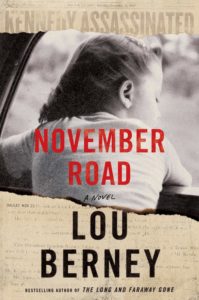 4. November Road by Lou Berney – In years past, I’ve read a lot of books written by Don Winslow. I think he’s a terrific writer and I’ve enjoyed several of his books, including The Winter of Frankie Machine, The Cartel, The Dawn Patrol, and Satori. I follow Winslow on Twitter and saw that he was recommending a book by Lou Berney. I had never heard of Berney, but I trusted Winslow’s recommendation. So, I read Berney’s book, November Road, and was blown away. November Road is an extremely well-crafted mystery novel that takes place in the 1960’s with the JFK assassination as a backdrop. I also read Berney’s book The Long and Faraway Gone in 2019, and if my list was one or two books longer, Berney would have had two books on it.
4. November Road by Lou Berney – In years past, I’ve read a lot of books written by Don Winslow. I think he’s a terrific writer and I’ve enjoyed several of his books, including The Winter of Frankie Machine, The Cartel, The Dawn Patrol, and Satori. I follow Winslow on Twitter and saw that he was recommending a book by Lou Berney. I had never heard of Berney, but I trusted Winslow’s recommendation. So, I read Berney’s book, November Road, and was blown away. November Road is an extremely well-crafted mystery novel that takes place in the 1960’s with the JFK assassination as a backdrop. I also read Berney’s book The Long and Faraway Gone in 2019, and if my list was one or two books longer, Berney would have had two books on it.
 3. The River by Peter Heller – The River is the story of two college friends who go for a long canoe and camping trip in northern Canada. Their idyllic trip is interrupted by a huge wildfire closing in on them. They’re in a rush to get off the river and out of the woods, but they are halted when they hear a couple arguing in the distance, and then come upon a man paddling the river alone. Have they just run across a murderer? Will they be able to find out before the wildfire consumes them? Heller’s writing is tremendous. The world he created is serene, yet unforgiving, and his story only slows down enough so the reader can catch their breath before plunging ahead into another conflict or adventure.
3. The River by Peter Heller – The River is the story of two college friends who go for a long canoe and camping trip in northern Canada. Their idyllic trip is interrupted by a huge wildfire closing in on them. They’re in a rush to get off the river and out of the woods, but they are halted when they hear a couple arguing in the distance, and then come upon a man paddling the river alone. Have they just run across a murderer? Will they be able to find out before the wildfire consumes them? Heller’s writing is tremendous. The world he created is serene, yet unforgiving, and his story only slows down enough so the reader can catch their breath before plunging ahead into another conflict or adventure.
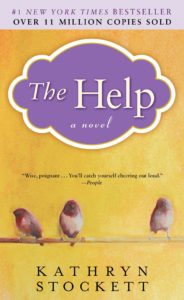 2. The Help by Kathryn Stockett – By now, I assume most of you have seen the movie, The Help, that was based on this book. Both the movie and the book were terrific, but of the two, I thought the book was better. Rather than talk about the story, I’d like to use The Help to briefly talk about something that has been in the news recently. The book, American Dirt by Jeanine Cummins, was catapulted to fame when it was selected for the Oprah Winfrey Book Club. Then, it was harshly criticized throughout the media. I haven’t read the book and don’t know if it was any good, but the quality of the writing isn’t what’s being criticized. What many pundits are critical of is the fact that a white female writer wrote about a Mexican woman and her child who flee Mexico after her family is killed, being chased into the US by narcotraffickers along the way. Critics accuse Cummins of cultural appropriation, claiming that she does not have the right to create characters or storylines that aren’t part of her lived experience. In other words, she can only write about people like her and situations she has experienced. I call BS. Kathryn Stockett, the author of The Help, is a privileged white woman who grew up in Jackson, Mississippi (where the story takes place), but she has never been black, never been poor, and never been a domestic worker in Jackson, working for rich white people. Yet, she created a wonderful and important book, not just from her own experiences, but from her research and imagination. The Help is a work of fiction, and the world would be a worse place without it.
2. The Help by Kathryn Stockett – By now, I assume most of you have seen the movie, The Help, that was based on this book. Both the movie and the book were terrific, but of the two, I thought the book was better. Rather than talk about the story, I’d like to use The Help to briefly talk about something that has been in the news recently. The book, American Dirt by Jeanine Cummins, was catapulted to fame when it was selected for the Oprah Winfrey Book Club. Then, it was harshly criticized throughout the media. I haven’t read the book and don’t know if it was any good, but the quality of the writing isn’t what’s being criticized. What many pundits are critical of is the fact that a white female writer wrote about a Mexican woman and her child who flee Mexico after her family is killed, being chased into the US by narcotraffickers along the way. Critics accuse Cummins of cultural appropriation, claiming that she does not have the right to create characters or storylines that aren’t part of her lived experience. In other words, she can only write about people like her and situations she has experienced. I call BS. Kathryn Stockett, the author of The Help, is a privileged white woman who grew up in Jackson, Mississippi (where the story takes place), but she has never been black, never been poor, and never been a domestic worker in Jackson, working for rich white people. Yet, she created a wonderful and important book, not just from her own experiences, but from her research and imagination. The Help is a work of fiction, and the world would be a worse place without it.
 1. The Great Alone by Kristin Hannah – You can be pretty sure that a book is good if it stays with you for weeks after reading it. It has been six months since a read The Great Alone and I still think about it often. The story is about a family from the northwest United States who moves to Alaska in 1974 after inheriting some land. The family consists of Ernt, a former POW from the Viet Nam war, his wife, Cora, and their thirteen-year-old daughter, Leni. What they find in Alaska is a beautiful, but unforgiving, land. Life is hard, made all the harder by Ernt’s frequent angry outbursts. He beats Cora when he’s angry. She makes excuses for him, never holding a grudge. Leni loves her father, but sees his dark side and does everything she can to avoid it. When a neighbor takes steps to modernize the town in order to take advantage of tourist dollars, Ernt does everything in his power to stop the inevitable. Hannah does a masterful job crafting the characters and the storyline. The Great Alone deserves to be the best book I read in 2019.
1. The Great Alone by Kristin Hannah – You can be pretty sure that a book is good if it stays with you for weeks after reading it. It has been six months since a read The Great Alone and I still think about it often. The story is about a family from the northwest United States who moves to Alaska in 1974 after inheriting some land. The family consists of Ernt, a former POW from the Viet Nam war, his wife, Cora, and their thirteen-year-old daughter, Leni. What they find in Alaska is a beautiful, but unforgiving, land. Life is hard, made all the harder by Ernt’s frequent angry outbursts. He beats Cora when he’s angry. She makes excuses for him, never holding a grudge. Leni loves her father, but sees his dark side and does everything she can to avoid it. When a neighbor takes steps to modernize the town in order to take advantage of tourist dollars, Ernt does everything in his power to stop the inevitable. Hannah does a masterful job crafting the characters and the storyline. The Great Alone deserves to be the best book I read in 2019.

 I’ve been toying with writing short-short stories. This kind of writing is commonly called flash fiction and it’s usually a thousand words or fewer per story. The length varies depending on the publishing outlet. Some places restrict the word count to 100 or less, while others go as high as 1500 words.
I’ve been toying with writing short-short stories. This kind of writing is commonly called flash fiction and it’s usually a thousand words or fewer per story. The length varies depending on the publishing outlet. Some places restrict the word count to 100 or less, while others go as high as 1500 words.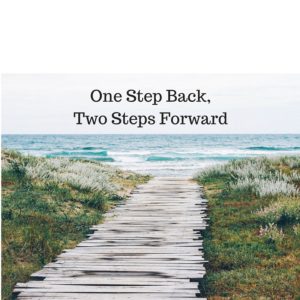 Writing this book has been a lesson in patience, frustration, anger, and disappointment. It has also shown me that sometimes, good things can come from bad situations.
Writing this book has been a lesson in patience, frustration, anger, and disappointment. It has also shown me that sometimes, good things can come from bad situations.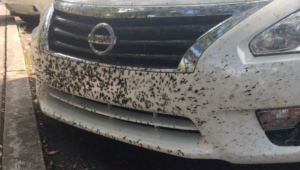 I took my car to the car wash today. The front of the car was covered with dead love bugs. Those nasty little critters have been swarming for the past few weeks. They can cause all kinds of problems, including clogging up car radiators, and, if you don’t wash them off soon enough, their acidic little bodies can eat away at the car’s clear coat.
I took my car to the car wash today. The front of the car was covered with dead love bugs. Those nasty little critters have been swarming for the past few weeks. They can cause all kinds of problems, including clogging up car radiators, and, if you don’t wash them off soon enough, their acidic little bodies can eat away at the car’s clear coat. On Tuesday, August 27 I logged into my online bank account to transfer some money, and saw an odd entry. It was so fresh, it hadn’t cleared my checking account yet, leading me to believe that the charge had just been made in the previous hour or two. The entry was a pre-authorized debit to AirBnB for $787.20. The entry included a confirmation code.
On Tuesday, August 27 I logged into my online bank account to transfer some money, and saw an odd entry. It was so fresh, it hadn’t cleared my checking account yet, leading me to believe that the charge had just been made in the previous hour or two. The entry was a pre-authorized debit to AirBnB for $787.20. The entry included a confirmation code. I hate to spew my personal issues on this blog. I started it to talk about my writing and to share stories I find interesting or inspiring. But as it turns out, people like it when I complain. We all have issues we’re dealing with in our lives, and as the old saying goes, misery loves company. So, for those that enjoy my complaining, I have a real treat for you. My next two posts will be nothing but complaining. Ready? Here goes.
I hate to spew my personal issues on this blog. I started it to talk about my writing and to share stories I find interesting or inspiring. But as it turns out, people like it when I complain. We all have issues we’re dealing with in our lives, and as the old saying goes, misery loves company. So, for those that enjoy my complaining, I have a real treat for you. My next two posts will be nothing but complaining. Ready? Here goes.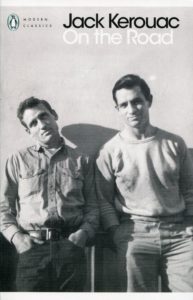 Sixty-two years ago today, Jack Kerouac’s
Sixty-two years ago today, Jack Kerouac’s 
 I hate being sold anything. I like buying things, but I hate being sold things. That’s why I like the following two ads from Audi. Rather than telling me (and everyone else) what we should buy, Audi is telling us a story. They’re not beating us over the head with reasons their car is better than others or giving us other reasons to buy an Audi. Instead, they’re speaking to our emotions, telling us a compelling story about people we don’t know, but who we start caring about almost as soon as the story begins.
I hate being sold anything. I like buying things, but I hate being sold things. That’s why I like the following two ads from Audi. Rather than telling me (and everyone else) what we should buy, Audi is telling us a story. They’re not beating us over the head with reasons their car is better than others or giving us other reasons to buy an Audi. Instead, they’re speaking to our emotions, telling us a compelling story about people we don’t know, but who we start caring about almost as soon as the story begins. I drive a lot, spending a good part of my life on the roads between Wisconsin, Tennessee, Florida and all the states in between. And I can tell you, there are some really bad drivers out on our highways. I’m constantly amazed at the ignorance people have for the rules of the road, as well as a lack of common decency. I don’t advocate road rage, but often, I can understand it.
I drive a lot, spending a good part of my life on the roads between Wisconsin, Tennessee, Florida and all the states in between. And I can tell you, there are some really bad drivers out on our highways. I’m constantly amazed at the ignorance people have for the rules of the road, as well as a lack of common decency. I don’t advocate road rage, but often, I can understand it.